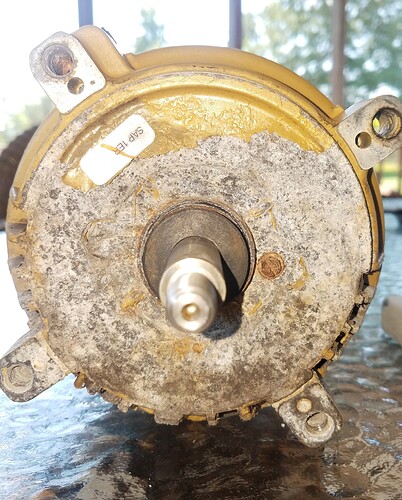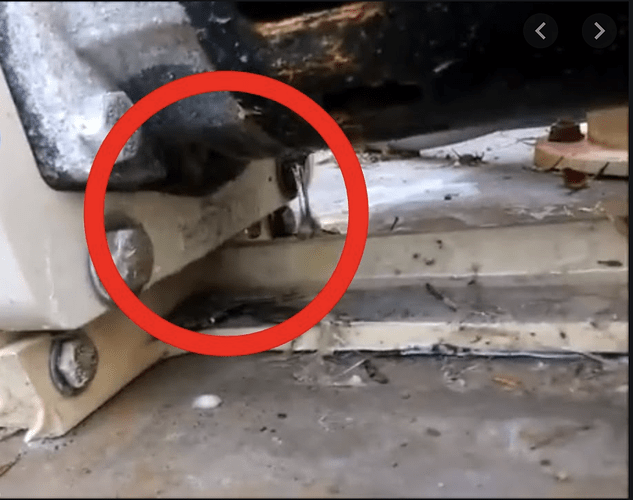Replaced a Hayward Super pump motor. Wondering why as a last line of defense the front of the motor isn’t covered with a plastic or rubber gasket between the mounting plate and the front of the motor.
Thinking about spraying a thin layer of one of the “magic seal” products on he front of the steel housing behind the water slinger. I guess the other option is to replace the seal each year but hate having to pull everything apart.
I suppose I could also make my own gasket as well.
Has anyone ever attempted something like this?
Thank you
Hi RMorty,
Could you post a photo of the exact areas and parts you are mentioning so we are talking about the same thing, this would help us in making suggestions?
Thanks for the reply.
Looking at it more closely I suppose the corrosion / rust in the picture is more cosmetic then anything with the real damage being done to the shaft and bearings. Keeping water off of the front of the motor doesn’t help much if water can still get to the shaft and bearings.
Just frustrated with the engineering, I had no leaks and the pump was fairly quiet before closing the pool down last fall so there was no reason I would have expected the seal to have gone bad (motor is 4 years old). Turned pump on to open pool and it was obvious the bearings had rusted.
The good news is my wife bought a replacement pump from you all for I think 169 or so along with a go kit for gaskets and seals. Local pool place wanted 349 for the replacement motor. I put everything back together last night and pump is running great and it’s quiet.
Suprised to see Century replacement was built in Mexico whereas the old one was Tipp City ohio.
Anyhow, think I will replace the seal every couple of years going forward. Bet these motors would last for far longer if.
-
Removed and stored inside during the winter.
-
Seal replaced every 2 or 3 years
In the mean time, would love to know if there is an easy way to know that the seal has failed OTHER than the motor making tons of noise at which point it’s to late. I suppose I could have just replaced the bearings but that screw next to the shaft was so rusted it was not coming off.
Thanks for your help
Richard
Hi RMorty,
Thanks for the photos! I have a friend who replaces his pool pump shaft seal every year and his motor is on 20+ years! Every year may be overkill but the more often you can replace it the better. The white build-up on the face of the motor within your photo is a classic sign of a shaft seal failure.
Well, now that I’ve replaced the seals when I installed the new motor I realize it isn’t that tough of a job although I do hate the wiring aspect of the job (heavy gauge wire, tight area to screw wires down). That may be the way to go.
Doing the math though. Go kit is $33 while motor and go kit is about $200. If I replaced seals and gaskets each year, in 7 years I will have spent on Go Kits what the cost of a motor and go kit cost.
As you pointed out, maybe every 2 or 3 years would be a good compromise.
Any signs you can think of that would help an owner to know that the seal is failing or has failed other than the screeching sound of rusted bearings?
Appreciate you taking the time to reply, in the grand scheme of things I suppose a $200 expense every 4 or 5 years isn’t that terrible. Extremely grateful that you all were able to provide a motor for HALF of what the local shops wanted. Hard to support locals when that kind of price disparity exists. I do understand that for them their costs are higher so they need larger profit margins and I’m guessing they are paying more for the motors since they are not buying hundreds at a time.
Be well, and thank you for your help.
Hi RMorty,
Thanks for the write up your analysis is spot on and I’m glad you were able to do the pool motor replacement without issue. Normally you will see a small pooling of water beneath the face of the motor when the seal goes bad so you may want to inspect beneath the motor periodically for any dampness or wet areas. See the example below…


